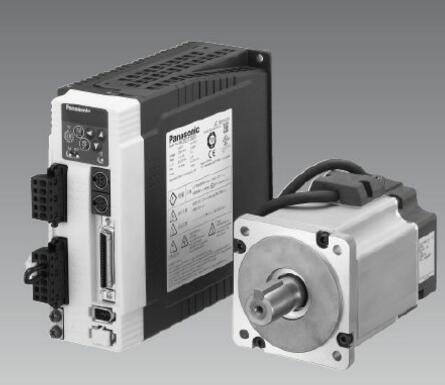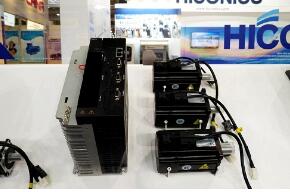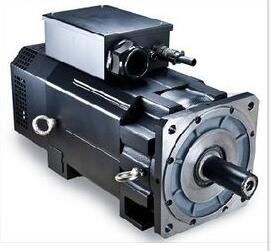Electrical servo technology is the most widely used. The main reason is that it is easy to control, flexible, and easy to obtain driving energy. It has no pollution pollution and is easy to maintain. Especially with the development of electronic technology and computer software technology, it provides a broad prospect for the development of electrical servo technology. This paper mainly introduces the current situation and development of AC permanent magnet synchronous servo system. Let's take a look at it in detail. After the 1980s, the motor speed control technology continued to develop, and the emergence of high-performance permanent magnet synchronous speed control system caused people to attach great importance to the research of permanent magnet synchronous servo system. The research work is mainly for the power supply by the inverter. Research on the performance of permanent magnet synchronous motor and research on the control of permanent magnet synchronous servo system. In the case of inverter power supply, the original characteristics of the permanent magnet synchronous motor will be affected to some extent. Its steady-state characteristics and transient characteristics have different characteristics compared with the permanent magnet synchronous motor under constant frequency power supply. For the analysis of synchronous motors, the Park model on synchronous rotating coordinates d and q is traditionally used. In practical applications, the Park model can solve the main problems in the performance analysis and control of permanent magnet synchronous motors, but considering the magnetic circuit of the motor. For the saturation and cross-coupling problems, there is an error in the analysis of the Park model. In order to improve the analysis accuracy of permanent magnet synchronous motor, the cross-coupling problem between magnetic circuit saturation and d and q coordinate parameters must be considered. The finite element analysis method is used to solve the parameters of the permanent magnet synchronous motor, and the variation of the motor parameters is tested to correct the mathematical model of the motor. The operating characteristics of the permanent magnet synchronous motor can be well described. The permanent magnet synchronous motor is excited by a permanent magnet, so it has no excitation loss and a small copper consumption, but its magnetic circuit structure is complicated and the iron loss is difficult to calculate. The iron loss directly affects the temperature rise of the motor, which affects the magnetic properties of the permanent magnet and changes the performance of the servo system. The method of equivalent magnetic circuit and the finite element method are used to solve the iron loss of permanent magnet synchronous motor. The results are satisfactory. With the continuous improvement of the servo drive performance requirements of permanent magnet synchronous motors, it is necessary to design a permanent magnet synchronous motor with high efficiency, high moment inertia ratio and high energy density. It is necessary to study the design method of permanent magnet synchronous motor that meets the requirements of modern servo drive. To achieve a high performance AC permanent magnet synchronous servo drive, a control system with excellent performance is required. Since the 1980s, with the rapid development of various related technologies, the research results of the vector control system of permanent magnet synchronous motor have emerged, laying a foundation for the research and application of high performance permanent magnet synchronous servo system. The current control method of the permanent magnet synchronous motor vector control system has a great influence on the operating characteristics of the system. It is necessary to study the dynamic and static characteristics of the system when different current control methods are used. The control methods include: a current control method with a maximum torque current ratio, a control method with a direct current equal to zero, a control method with a power factor equal to 1, and a constant control method for an air gap flux linkage, which provide different speed regulation performances. Can be suitable for different requirements of the application. In general, the permanent magnet synchronous servo system must have a wide speed range and a stable torque output characteristic. In order to meet the actual needs, the motor runs at a constant torque below the rated speed. Above the rated speed, the motor operates at a constant power. As the motor speed increases, the induced electromotive force in the stator winding increases continuously. When the speed rises to a certain level, the inverter output current will not be able to follow the current reference, the motor output torque will drop, and the performance will deteriorate. In order to improve the torque output capability of the motor at high speed, it is necessary to implement a field weakening control on the motor. However, the magnetic field of a permanent magnet synchronous motor is generated by a permanent magnet and cannot be controlled like a direct current and an asynchronous motor. In order to achieve the field weakening, the direct-axis current is added to the armature winding of the motor, and the magnetic field generated by the permanent magnet is cancelled by the motor's direct-axis armature reaction, thereby improving the high-speed running performance of the permanent magnet synchronous motor. With the rapid development of microcomputer technology, especially DSP technology, the digitization of permanent magnet synchronous servo system is in full swing. Huazhong University of Science and Technology, Shenyang University of Technology, and Tianjin University studied the all-digital AC servo system composed of single-chip microcomputer or DSP. Using predictive control and space vector control technology to improve current control performance and system response accuracy, the control theory of servo system was studied. A digital servo system was developed. The application of digital control technology not only makes the system obtain high precision and high reliability, but also provides a basis for the application of new control theory and method. The application of DSP and single-chip microcomputer greatly simplifies the system structure, improves the system performance, and presents a fully digital software servo system, which significantly improves the reliability, flexibility and dynamic performance of the permanent magnet synchronous servo system. Since the 1980s, some well-known foreign companies, such as Japan's FANUC, Yaskawa, Fujitsu, Panasonic, American AB, Kollmorgen, Germany's Siemens, France's BBC, South Korea's Samsung, etc. continue to introduce AC servo drive Products, the servo drive market is almost a situation in which foreign companies dominate the world. Then, China's Huazhong University of Science and Technology, Beijing Machine Tool Research Institute, Xi'an Micro-Electrical Research Institute, Shenyang Institute of Automation, Chinese Academy of Sciences, Lanzhou Motor Factory and other units began to research and launch AC servo system. Among them, the DA98 full digital AC servo drive produced by Guangzhou CNC, the GY-2000 series digital AC servo drive produced by the Plateau CNC Yantai Company has opened up the situation in China's high-precision CNC servo drive industry, breaking the monopoly of foreign companies. The pattern has created a new era of national brands. The servo drive system is composed of two parts: the main circuit and the control circuit. At present, the topology of the main circuit does not change much. The development of the servo drive system focuses on the control circuit. With the emergence of new power electronic devices, the development of DSP technology, the use of modern control theory, the research of permanent magnet synchronous servo system has appeared in some new directions, mainly including the following aspects. (1) Development of mathematical model analysis methods for electric motors The permanent magnet synchronous motor is a multi-input, strong-coupling, nonlinear system. In order to improve the control precision, the linear state feedback theory of nonlinear system is gradually introduced into the control of the motor. However, due to the complexity of the method, the limitation is limited. Its promotion and application. The inverse system approach is another way to analyze nonlinear systems The idea is that for a given system, let the model of the object generate the "α-order integral quasi-system" of the original system realized by the feedback method, and the control object compensation becomes a standardized system that has a linear transfer relationship and has been decoupled (pseudo Linear system), and then the system synthesis is completed by various design theories of linear systems. The method is unified in theory, the physical concept is clear and intuitive, and it is easy to be accepted by people. (2) Introduction of modern control theory The proposed AC motor vector control technology has significantly improved its speed regulation performance. However, the traditional vector control technology relies on the model and parameters of the motor, and the model and parameters are changed during the operation of the motor, which makes the vector control of the motor unable to reach the theoretical performance index, and can not meet the requirements of modern servo drive systems. Application requirements. Various techniques of modern control theory enable the system to maintain good control performance as models or parameters change. Adaptive control technology means that under certain mathematical model-determined algorithms, the system-related parameters can be identified when the system operation changes, and the system operation program can be modified to improve the control performance of the system when the control object and operating conditions change. Simulation and experimental results show that the adaptive control technology can maintain good control performance when the system parameters change. However, the control algorithm is computationally intensive and requires a high speed data processor. Sliding mode variable structure control is to adjust the structure of the feedback control system, so that its state vector changes when switching the hyperplane, and the state vector of the system is constrained to slide in the field of the switch surface. The dynamic quality of the system is determined by the parameters of the switch surface. It is independent of the parameters and disturbances of the system and has good robust control. It has been successfully applied in the permanent magnet synchronous motor speed control system. But it is essentially a kind of switch control, which inevitably brings jitter in the system, thus affecting its application. The parameters of the motor change during operation. The system is controlled by adaptive observer, Kalman filter, Longberg observer and other identification techniques, which can also improve the performance and reliability of the motor system control. (3) Application of artificial intelligence technology The control strategy based on classical or modern control theory relies on the mathematical model of the motor. When the model parameters change, it is an important subject for researchers to obtain excellent control performance. In recent years, the intelligent control that has received much attention has become a hot spot of research and development because it has got rid of the dependence on the controlled object model. With the development of artificial intelligence technology, intelligent control has become an important branch of modern control. Intelligent electric drive control has become an important development direction of electric drive, opening up a new era of electric drive technology. The application and research of artificial intelligence expert system, fuzzy control, neural network and so on in the motor drive system have achieved gratifying results. (4) Speedless sensing vector control technology High-performance AC servo systems require closed-loop control of the speed. The required speed feedback signal comes from a speed sensor that is coaxially connected to the motor shaft. The system continuously measures the motor speed and rotor position to complete the vector transformation and achieve dynamic control of the motor torque. In order to obtain an accurate and reliable position signal, the speed sensor must be accurately installed and properly maintained. The installation of high-precision speed sensors increases the maintenance requirements of the system, the system's ability to adapt to the environment is also worse, and the cost is increased, which is limited in applications where reliability is required (such as military equipment). Therefore, eliminating the speed sensor and making the system have good control performance has become an important issue in the field of motor speed regulation. The key to the speed-free sensing technology is the acquisition of the speed information. The accuracy of the speed estimation directly determines the performance of the speed control system. How to accurately estimate the speed and position of the motor by means of the measured motor voltage and current signals, becoming the speed-free sensing The key to technology. In the speed-free sensing technology, the methods for obtaining the motor speed are mainly as follows: 1) An estimation method for constructing the rotor position of a motor using a mathematical model or electromagnetic characteristics. 2) Estimate the motor speed using other methods of identification and estimation. 3) Using the adaptive control theory, select the appropriate reference and adjustable model, and identify the motor speed by means of an adaptive algorithm. 4) Using the harmonic potential of the motor to obtain the rotational speed and the like. However, no matter what method, it is very difficult to obtain accurate motor speed and position at low speed. Therefore, widening the range of low-speed applications is an urgent problem to be solved by speed sensorless technology. (5) Development of modern inverter technology Power electronics technology is an important link to realize the relationship between information flow and material/energy flow. The development of inverter devices is a sign of the development of power electronics technology. From phase-controlled devices represented by thyristors to fully-controlled devices represented by GTR and GTO, to gated devices represented by MOSFETs, IGBTs and IPMs, power electronic devices have undergone three developments. The current control inverter with PWM technology as the core is an important part of the vector control system, and its performance has a great influence on the entire control system. The PWM control techniques widely used in vector control systems are: a. SPWM control of sine wave to triangular wave modulation. b. Eliminate the PWM control of the specified harmonics, both a and b are controlled by the output sine wave voltage. c. Hysteresis current control PWM, which uses sinusoidal current output as the control target. d. Space vector control SVPWM, which is aimed at the simple algorithm of the controlled motor. At the same time, various current control methods such as predictive current control and tracking trajectory current control are proposed, which lays a foundation for better vector control. With the birth of high-performance microprocessors, digitally controlled AC permanent magnet synchronous servo systems are moving toward miniaturization, digitization, intelligence, and high performance, and with the increasing demand for high-performance servo drives, permanent magnets Synchronous servo systems are also becoming more and more widely used due to their own advantages.
ZGAR bar 600 Puffs
ZGAR electronic cigarette uses high-tech R&D, food grade disposable pod device and high-quality raw material. All package designs are Original IP. Our designer team is from Hong Kong. We have very high requirements for product quality, flavors taste and packaging design. The E-liquid is imported, materials are food grade, and assembly plant is medical-grade dust-free workshops.
Our products include disposable e-cigarettes, rechargeable e-cigarettes, rechargreable disposable vape pen, and various of flavors of cigarette cartridges. From 600puffs to 5000puffs, ZGAR bar Disposable offer high-tech R&D, E-cigarette improves battery capacity, We offer various of flavors and support customization. And printing designs can be customized. We have our own professional team and competitive quotations for any OEM or ODM works.
We supply OEM rechargeable disposable vape pen,OEM disposable electronic cigarette,ODM disposable vape pen,ODM disposable electronic cigarette,OEM/ODM vape pen e-cigarette,OEM/ODM atomizer device.
Disposable Vape, bar 600puffs, ZGAR bar disposable, Disposable E-cigarette, OEM/ODM disposable vape pen atomizer Device E-cig ZGAR INTERNATIONAL(HK)CO., LIMITED , https://www.szvape-pods.com


